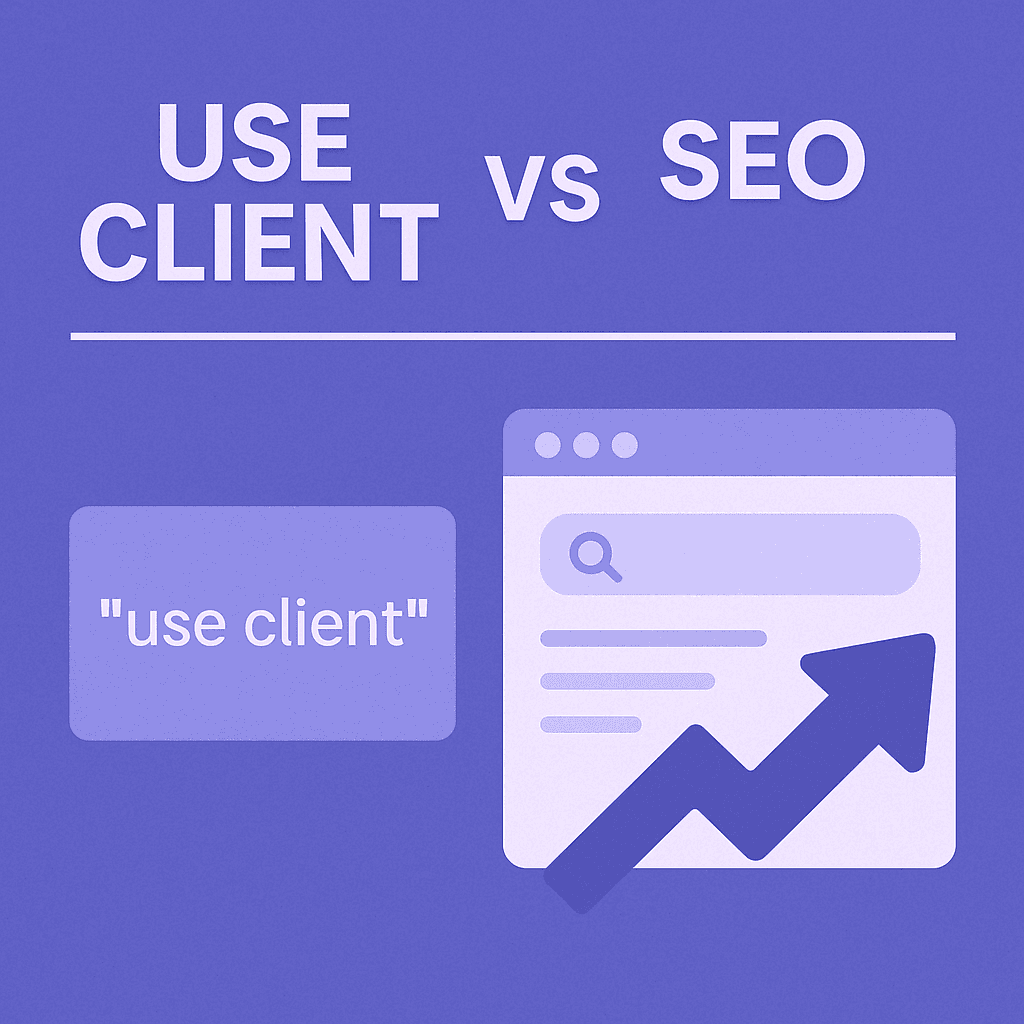
"If I use 'use client', I lose server-side rendering and my SEO goes down the drain!"
Man, I see this panic every single day. Developers contorting their code, creating absurd architectural workarounds, all to avoid that dreaded "use client" at the top of the file.
And you know what's the funny part? It's all based on a lie.
The Naked Truth
Let me be straight with you:
"use client" does NOT disable Server-Side Rendering.
"use client" only defines where the component is hydrated, not where it's initially rendered. That's a huge difference, and a lot of people get confused about it.
What Actually Happens: The Complete Flow
Let me show you with a simple example, an <InteractiveButton />:
// components/InteractiveButton.tsx "use client" import { useState } from 'react'; export default function InteractiveButton() { const [count, setCount] = useState(0); return ( <div className="counter"> <h2>You clicked {count} times</h2> <button onClick={() => setCount(count + 1)}> Click here </button> </div> ); }
Now look at what happens behind the scenes (step by step):
1. On the Server (during Build or on Request)
Next.js renders the component on the server and generates the complete initial HTML. Like this:
<div class="counter"> <h2>You clicked 0 times</h2> <button>Click here</button> </div>
See that? The HTML is already ready, complete and all.
2. Preparing the Bundle
Next.js packages everything you need: the rendered HTML, the JavaScript needed for hydration, CSS, assets... everything bundled together.
3. Sending to the Client
The server sends to the browser the complete HTML (already rendered), the optimized JavaScript bundle, and the hydration instructions.
4. In the Browser (Hydration)
Now React "wakes up" that static HTML. It attaches the event listeners, connects the state, and boom - the component becomes interactive.
And what does Google see in all of this?
Well, Googlebot does exactly the first step: fetches the initial HTML. And guess what? It sees everything:
- ✅ Title
- ✅ Description
- ✅ Headings (h1, h2, h3...)
- ✅ Complete content
- ✅ Links
- ✅ Images with alt text
Zero SEO problems.
⚠️ When You ACTUALLY Lose SSR (and SEO)
But hold on, it's not all roses. There IS a scenario where you do lose the benefits of SSR, and this is where most people mess up:
❌ The Deadly Anti-Pattern
"use client" import { useEffect, useState } from 'react'; export default function ProductDetails() { const [product, setProduct] = useState(null); const [loading, setLoading] = useState(true); useEffect(() => { // 💀 Fetches data AFTER the page loads fetch('/api/product/123') .then(res => res.json()) .then(data => { setProduct(data); setLoading(false); }); }, []); if (loading) return <div>Loading...</div>; if (!product) return <div>Product not found</div>; return ( <div> <h1>{product.name}</h1> <p>{product.description}</p> <span>${product.price}</span> </div> ); }
What does Google see in this case?
<div>Loading...</div>
This is not cool.
Why?
Because the initial HTML is rendered before useEffect runs. useEffect only executes in the browser, after hydration. So check out the timeline:
1. Server renders → <div>Loading...</div>
2. HTML arrives in the browser
3. Google indexes → "Loading..." 💀
4. React hydrates
5. useEffect runs
6. Data arrives
7. Component re-renders
8. (But Google left a long time ago)
Got the problem? You basically delivered an empty page to Google.
The Golden Rule
Remember this:
Fetch data on the server. Add interactivity on the client.
Or, translating to code:
// ✅ CORRECT async function ServerComponent() { const data = await fetchData(); // Server fetches return <ClientComponent data={data} />; // Client receives it ready } // ❌ WRONG function ClientComponent() { useEffect(() => { fetchData(); // Client fetches (too late for SEO) }, []); }
Conclusion: Free Yourself from Fear
Look, Server Components and Client Components are not opposites. They're complementary. They actually work together.
"use client" is not your enemy. It's a tool, and like any tool, you just need to know when to use it.
Think of it this way: Server Components do the heavy lifting. Client Components add the interactive magic. Both are rendered on the server. Both generate initial HTML. Both are SEO-friendly.
Use "use client" when you need:
- ✅
useState,useEffect, other hooks - ✅ Event handlers (
onClick,onChange) - ✅ Browser APIs (
localStorage,navigator) - ✅ Libraries that need the DOM
And stop being afraid of SEO. Next.js handles that for you. HTML is always rendered on the server. Always. "use client" just says: "hey, this one also needs JavaScript to be interactive."
That's it. Nothing more, nothing less.
Now go ahead and use "use client" without guilt! 🚀
SEO thanks you. Google thanks you. And your bundle size does too (when you use it wisely).